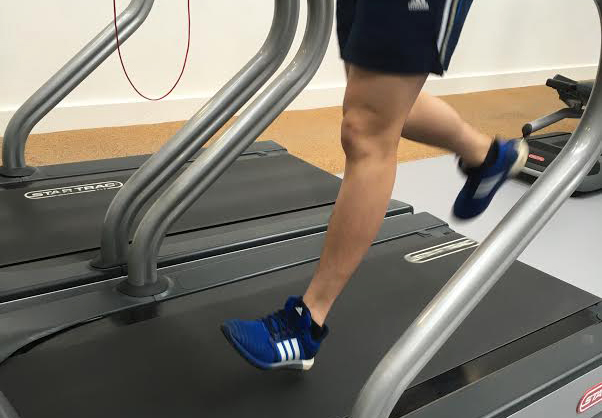Kent Sport physiotherapist Vicky Annis examines the causes of shin pain and what can be done to combat this condition.
Do you have pain on the inside of your shin? Have you been progressing your running and been held back due to pain in your shins? Shin splints is a term that has been used for years but should really be referred to as medial tibial stress syndrome (MTSS). The common signs of MTSS are pain or discomfort on the inside of the shin when running, walking or impacting on the ground.
When we strike the ground, we naturally then have to absorb a ground reaction force. The quicker we run or the higher we land from, the more force we have to absorb. The muscles and bones do a very good job of absorbing this load, however, when we reach capacity and muscle control becomes submaximal, MTSS can develop.
Knowing when to stop and how to manage the symptoms can be tricky. What a lot of people tend to do is run one day, feel the physiological and psychological benefits and want to return and do the same thing or more the next day. Recovery does not work like this. A highly trained athlete may have the muscle capacity to do repeated running/loading but a gradual build is what will make the difference. Remodelling is the term given to bones that have been stressed and this happens around five days after stimulation. Recovery from a run can still be going on internally over 3 weeks after the stimulation. This is not to say you cannot still exercise, but the type of exercise is the key.
There are many factors to consider to understand why you have developed MTSS. We recommend you think about the following factors:
- Footwear is so important. Here in the fitness suite, we see all different types of footwear. It is not about the colour or style. It is about whether the shoes match your foot. There are many trainers on the market but if you are struggling, we recommend you start with a neutral shoe and come and speak to us prior to investing in anything more technical.
- Listening to your feet. The sound of some feet on the treadmill can be mistaken for a mini elephant! We recommend that if you are having any signs of MTSS, make sure you are not using your headphones and focus on the sound of your feet. It is surprising the difference in load when you concentrate on your feet.
- If you are only returning to activity after a spell of injury or wanting to change your lifestyle, you must think about where you are currently at. If your body is only used to walking around university, do not expect to be able to run 5km every day. This is a goal and certainly achievable. The same applies to those who are running 5km every day and wanting to make the next step. Even a 10% increase in volume over 2-3 weeks is ample to change the amount of load you are putting through the muscles and bones.
- The type of activity also makes a difference. One may change from running regularly to playing tennis regularly. Although this could be a lighter load, it doesn’t mean to say the muscles and bones won’t need time to adjust to being loaded differently.
- We believe that running technique can be altered. This is not to say that everybody should start barefoot running; totally the opposite. We learn to ride a bike, learn to swim, play an instrument. Running is taken for granted. On Saturday 8th July, the Kent Sport Physiotherapy Clinic will be holding their second running workshop. It is open to anyone interested in learning more about running technique. It is not to make everybody run like Mo Farah, but to get people to use their feet and be aware of where their body is positioned when running. For further details and an application form, please visit the Kent Sport Physiotherapy Clinic webpage.
- Calf strength. We take our calf strength for granted. Walking, studying, sitting do not train our calves to be strong. When we run, we need to absorb more shock and it is not wise to go from a day at work to slipping your trainers on and starting running. Simple calf raises can be good and lifting the heel and holding this position.
There are so many exercises and contributing factors that have not been mentioned above. This list is far from exhaustive. Please contact the Kent Sport Physiotherapy Clinic for further advice by calling 01227 824375 or emailing physio@kent.ac.uk.

